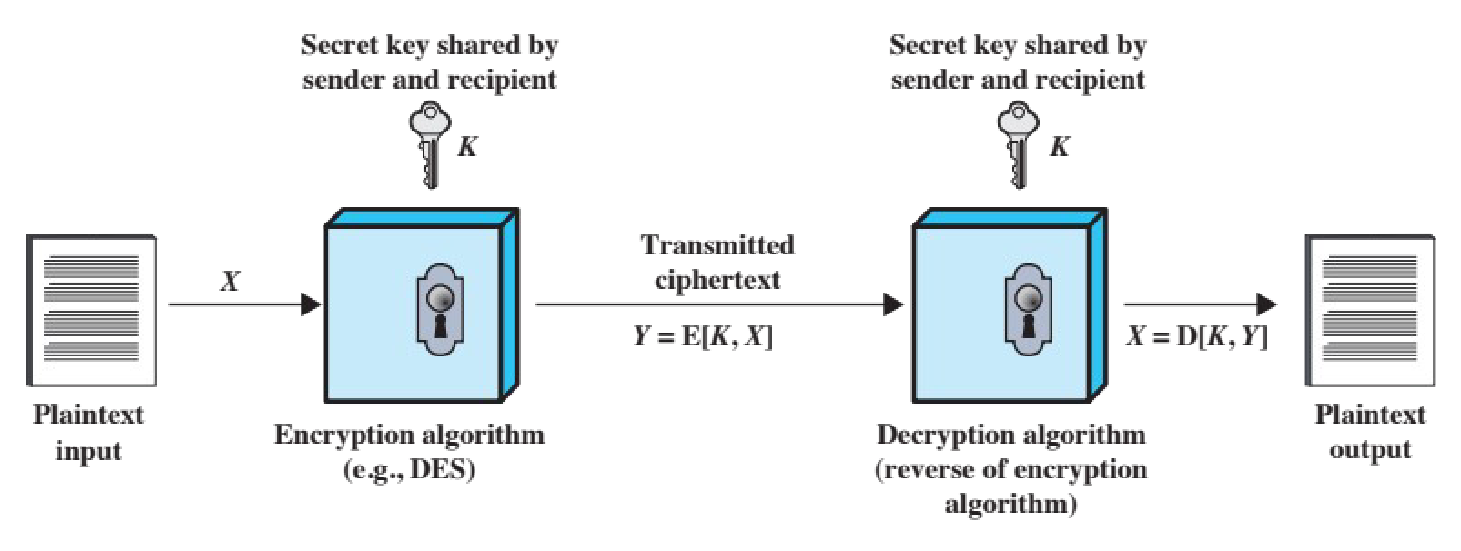symmetric encryption
Symmetric encryption (or single-key encryption/conventional encryption) is the universal technique for providing confidentiality for transmitted or stored data.
Two requirements need to be met for secure use:
- a strong encryption algorithm
- sender and receiver must have obtained copies of the secret key in a secure fashion, and must keep the key secure
simplified model
attacks
There are two kinds of attacks used on symmetric encryption:
- cryptoanalytic attacks ⟶ rely on the nature of the algorithm, knowledge of the general characteristics of the plaintext, or some plaintext-ciphertext pairs
- they exploit the characteristics of an algorithm to attempt to deduce a plaintext or a key (if successful, all future and past messages encrypted with that key are compromised)
- these types of attacks are mainly used to reduce the dictionary of a possible brute-force attacks, but they have become outdated due to the new standards of encryption
- brute-force attacks ⟶ all possible keys are tried until an intelligible translation into plaintext is obtained (on average, half of all possible keys must be tried)
